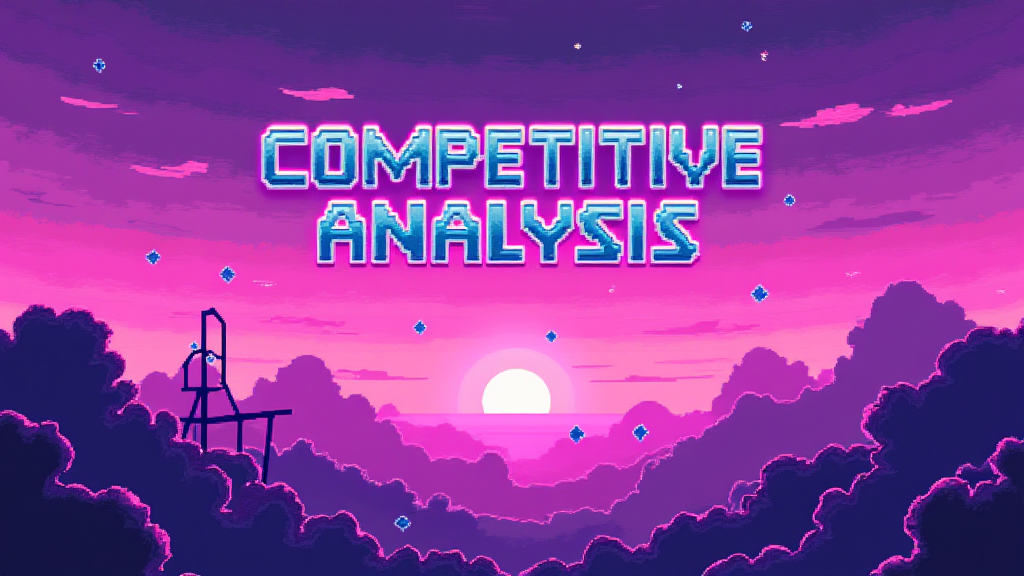Competitive Analysis: Mastering Market Insights

Published on: October 01, 2024
In the fast-paced world of business, staying ahead of the competition is crucial for success. Competitive analysis is a strategic tool that empowers organizations to gain valuable insights into their market position, identify opportunities, and make informed decisions. Let's dive into the world of competitive analysis and explore its significance in Sales, Marketing, and Revenue Operations.
What is Competitive Analysis? 🔍
Competitive analysis is a systematic process of evaluating your competitors' strengths, weaknesses, strategies, and market positioning. It involves gathering and analyzing data about rival companies to understand their products, services, marketing tactics, and overall business approach. This information helps organizations benchmark their performance, identify gaps in the market, and develop strategies to gain a competitive edge.
Why is Competitive Analysis Important? 🏆
Conducting a thorough competitive analysis offers numerous benefits:
- Informed Decision-Making: Gain insights to make data-driven strategic decisions
- Market Positioning: Understand your unique value proposition in the market
- Identifying Opportunities: Discover untapped market segments or product improvements
- Risk Mitigation: Anticipate and prepare for potential threats from competitors
- Improved Marketing Strategies: Refine your messaging and targeting based on competitor insights
Key Components of Competitive Analysis 📊
A comprehensive competitive analysis should include the following elements:
- Competitor Identification: Create a list of direct and indirect competitors
- Product/Service Comparison: Analyze features, pricing, and unique selling points
- Marketing Strategies: Examine competitors' marketing channels, messaging, and tactics
- SWOT Analysis: Assess strengths, weaknesses, opportunities, and threats for each competitor
- Market Share: Determine the relative market position of each competitor
- Customer Analysis: Understand target audiences and customer satisfaction levels
- Technology and Innovation: Evaluate technological capabilities and R&D efforts
Competitive Analysis Frameworks 🧠
Several frameworks can guide your competitive analysis process:
| Framework | Description |
|---|---|
| Porter's Five Forces | Analyzes industry competition, potential new entrants, suppliers, customers, and substitute products |
| SWOT Analysis | Examines internal strengths and weaknesses, and external opportunities and threats |
| Perceptual Mapping | Visualizes brand positioning based on key attributes |
| Growth-Share Matrix | Categorizes products or business units based on market growth and market share |
Conducting a Competitive Analysis: Step-by-Step Guide 📝
- Define Your Objectives: Clearly outline what you want to achieve with your analysis
- Identify Competitors: Create a comprehensive list of direct and indirect competitors
- Gather Data: Collect information from various sources (websites, social media, industry reports, etc.)
- Analyze Products/Services: Compare features, pricing, and unique selling points
- Evaluate Marketing Strategies: Examine competitors' marketing channels and messaging
- Assess Market Positioning: Determine how competitors position themselves in the market
- Identify Strengths and Weaknesses: Conduct a SWOT analysis for each competitor
- Analyze Customer Feedback: Review customer reviews and satisfaction levels
- Synthesize Findings: Compile insights and draw actionable conclusions
- Develop Strategies: Create action plans based on your analysis
Tools for Competitive Analysis 🛠️
Leverage these tools to streamline your competitive analysis process:
- SEMrush: Analyze competitors' SEO strategies and keyword rankings
- SimilarWeb: Gain insights into website traffic and engagement metrics
- Ahrefs: Examine backlink profiles and content performance
- Hootsuite: Monitor social media presence and engagement
- Crayon: Track competitors' marketing and product changes
Common Challenges in Competitive Analysis 🚧
Be aware of these potential pitfalls:
- Confirmation Bias: Avoid seeking information that only confirms existing beliefs
- Analysis Paralysis: Don't get overwhelmed by excessive data; focus on actionable insights
- Outdated Information: Ensure you're working with current, relevant data
- Overlooking Indirect Competitors: Consider all potential threats, not just direct rivals
- Lack of Objectivity: Maintain an unbiased perspective when analyzing competitors
Implementing Competitive Analysis in Your Strategy 🚀
To maximize the value of your competitive analysis:
- Regularly Update: Conduct analyses periodically to stay current with market changes
- Share Insights: Distribute findings across relevant teams (Sales, Marketing, Product Development)
- Set Benchmarks: Use competitor data to establish performance goals
- Iterate and Improve: Continuously refine your analysis process based on results
- Act on Insights: Develop and implement strategies based on your findings
By mastering competitive analysis, you'll be better equipped to navigate the complex business landscape, make informed decisions, and drive your organization towards sustainable growth and success.
Questions to Consider for Your Competitive Analysis 🤔
As you implement competitive analysis in your Sales or Marketing stack, ask yourself:
- How frequently should we conduct competitive analyses to stay current?
- Which competitors pose the greatest threat to our market position?
- What unique value propositions can we develop based on competitor weaknesses?
- How can we integrate competitive insights into our sales and marketing strategies?
- What tools and resources do we need to streamline our competitive analysis process?
By addressing these questions, you'll be well on your way to leveraging competitive analysis for strategic advantage in your industry.
















